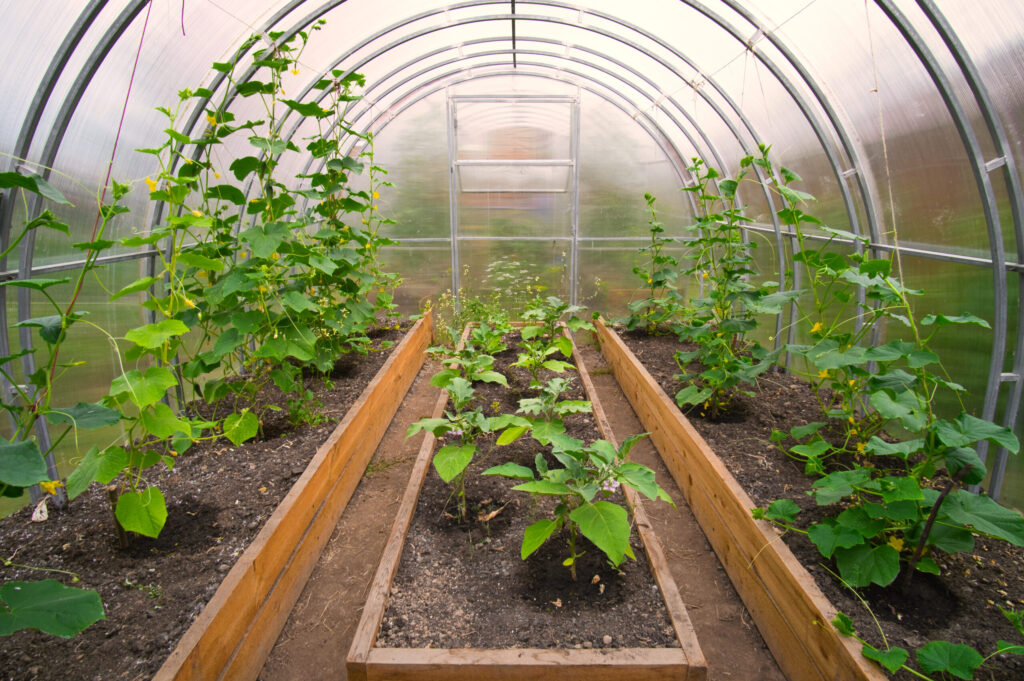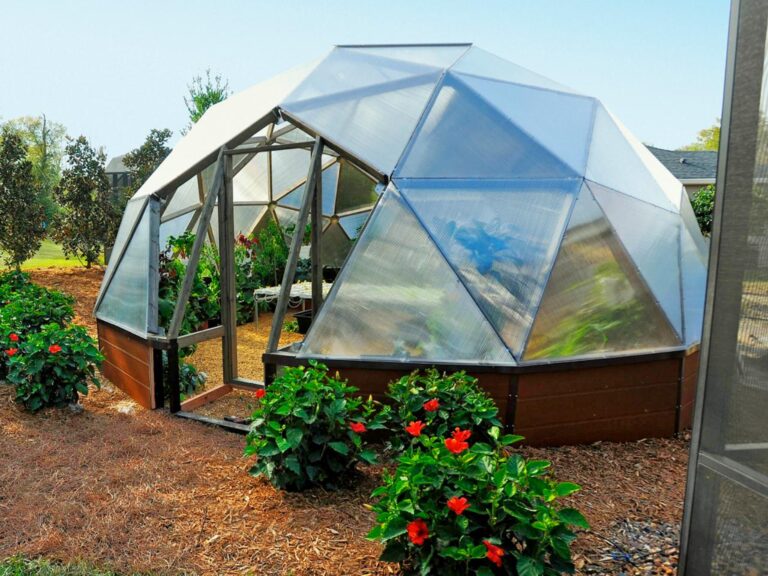Greenhouses are transparent structures designed to cultivate plants by controlling environmental factors like temperature, humidity, and light. They come in various types and materials, enabling year-round plant growth regardless of external weather conditions.
Greenhouses facilitate crop diversity, aid research, and play a vital role in commercial agriculture by providing controlled environments for optimal plant development. They’re used for pest management, sustainability practices, and creating microclimates to support different plant needs.
What are the types and materials used in greenhouses?
These components and features collectively contribute to the functionality, efficiency, and sustainability of greenhouse operations, allowing for optimized plant growth and environmental impact management.
Types of Greenhouses

Attached Greenhouses
These are structures connected to an existing building, utilizing one wall as part of the greenhouse structure. They share a wall with the house or another building, providing easier access to utilities like electricity or water.
Freestanding Greenhouses
These are independent structures not attached to any building, providing more flexibility in terms of placement, design, and orientation to sunlight. They can be placed anywhere on a property based on optimal sun exposure.
Lean-to Greenhouses
These are constructed against an existing building, using the building’s wall for support and often sharing a roof. Lean-to greenhouses are space-saving and can benefit from the thermal mass of the connected structure.
Materials Used
Glass
Traditional greenhouse material known for its excellent light transmission and aesthetic appeal. It provides good insulation but can be fragile and costly.
Polycarbonate
A durable, lightweight, and cost-effective alternative to glass. It offers good insulation and light diffusion while being less prone to breakage.
Plastic (Polyethylene Film)
Flexible and affordable, plastic film is commonly used for smaller or temporary structures. It allows for good light transmission but might degrade over time and require replacement.
Ventilation Systems and Their Significance
Natural Ventilation
Utilizes vents, windows, or roof openings to allow air circulation. This helps control temperature, humidity, and prevents issues like fungal growth or overheating.
Mechanical Ventilation
Involves fans, louvers, or automated systems to regulate airflow. It’s particularly useful in larger greenhouses or in regions with limited natural ventilation.
Importance
Proper ventilation is critical for controlling temperature, removing excess humidity, and replenishing carbon dioxide. It also helps in preventing the buildup of pests and diseases.
Sustainability Features
Rainwater Harvesting
Collecting rainwater for irrigation reduces reliance on municipal water sources, conserves water, and reduces costs.
Energy Efficiency
Using renewable energy sources like solar power to run greenhouse operations can lower energy costs and reduce the carbon footprint.
Other Features
Incorporating features like thermal mass, insulation, and efficient heating/cooling systems contributes to sustainability by reducing energy consumption and waste.
How do greenhouses provide controlled environments and manage temperature?

Greenhouses offer a range of benefits by providing a controlled environment that supports diverse plant growth, helps manage pests and diseases, extends growing seasons, and serves as a platform for scientific research and experimentation in agriculture.
Controlled Environment for Plant Growth
Greenhouses provide a controlled environment where factors like temperature, humidity, light exposure, and air quality can be precisely managed, ensuring ideal conditions for plant growth throughout the year.
By shielding plants from harsh weather conditions, pests, and extreme temperatures, greenhouses create a stable environment conducive to plant health and development.
With controlled conditions, greenhouses enable the cultivation of plants beyond their typical growing seasons, allowing for year-round production and harvest.
Temperature and Humidity Regulation
Greenhouses trap solar radiation, creating a warmer environment than the external surroundings. Ventilation systems help regulate and maintain optimal temperatures for various plant species.
Greenhouses maintain consistent humidity levels, preventing excessive moisture that could lead to fungal growth or too dry conditions that might stress plants.
Pest and Disease Management
Greenhouses create a barrier against pests and diseases present in the external environment, reducing the risk of infestations and infections. This isolation helps in controlling and managing specific plant diseases or pest attacks.
Techniques like biological control (using natural predators), crop rotation, and careful monitoring help minimize the need for chemical pesticides, promoting healthier plants and ecosystems.
Crop Diversity and Cultivation Possibilities
Greenhouses allow for the cultivation of a wide range of plants, including vegetables, flowers, herbs, and exotic species that might not typically thrive in a specific region or climate.
Different crops have specific environmental requirements. Greenhouses enable growers to tailor conditions such as temperature, light, and humidity to suit each crop’s needs, enhancing growth and yield.
Research and Development Applications
Greenhouses serve as controlled environments for experimenting with plant genetics, aiding in the development of new varieties, hybrids, or genetically modified organisms (GMOs).
Researchers use greenhouses to conduct experiments on the effects of various factors (e.g., temperature, light intensity, nutrient levels) on plant growth and development, contributing to agricultural innovation and understanding.
Greenhouses offer a range of benefits by providing a controlled environment that supports diverse plant growth, helps manage pests and diseases, extends growing seasons, and serves as a platform for scientific research and experimentation in agriculture.
FAQ’s
Who made the first greenhouse?
The first greenhouse is believed to have been built by the Romans around 30 AD under Emperor Tiberius’ reign.
Who is the father of the greenhouse?
Joseph Paxton, a 19th-century English gardener and architect, is often referred to as the “father of the modern greenhouse” for designing the Crystal Palace in London.
Why is a greenhouse called green?
The term “greenhouse” originates from the greenish hue of the glass commonly used in early structures, which contributed to the name.
Which greenhouse is man-made?
All greenhouses are man-made structures designed for controlled plant growth, irrespective of their size, shape, or materials used.
Which country discovered the greenhouse effect?
The greenhouse effect was first identified by French scientist Joseph Fourier in the 1820s, although its term and further exploration evolved over time through various scientific contributions.
What is a greenhouse made of?
Greenhouses can be made of various materials, including glass, polycarbonate, or plastic, to allow sunlight penetration while creating a controlled environment for plant growth.
Final Words
In conclusion, greenhouses are super important for plants because they provide a safe and comfy place for them to grow. They control things like temperature and light, so plants can grow even when it’s not the best weather outside. Greenhouses come in different types and are made of stuff like glass or plastic to make sure plants have a good home. They’re not just for big farms – people can use them for their gardens too.
Plus, scientists can learn a lot and make new kinds of plants in greenhouses. Overall, greenhouses are like cozy homes for plants, helping them grow better and stay healthy.

